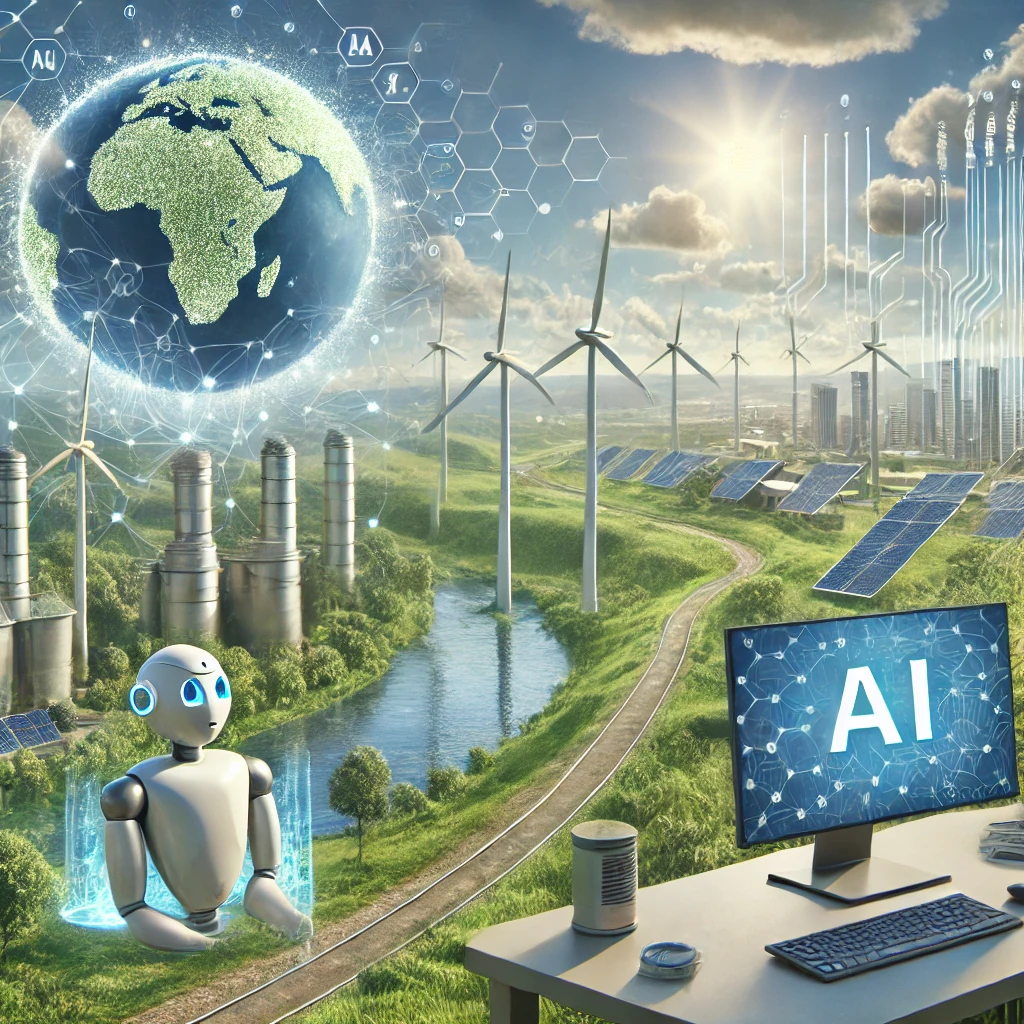Artificial intelligence (AI) is emerging as a powerful tool in the global fight against climate change. From monitoring environmental conditions to optimizing resource use, AI can enhance our ability to understand, mitigate, and adapt to the impacts of climate change. As the planet faces unprecedented ecological challenges, the integration of AI into climate science and environmental management offers new opportunities to track climate trends, predict future scenarios, and implement solutions that reduce the human footprint on the planet. This article explores how AI is being used to address climate change and the role it can play in creating a more sustainable future.
AI in Climate Monitoring
One of the key applications of AI in climate change is its ability to analyze vast amounts of environmental data. AI algorithms can process information from a wide range of sources, including satellite imagery, sensor networks, and weather stations, to detect patterns and anomalies that are crucial for climate monitoring.
For example, AI-powered models can analyze satellite data to track deforestation, ice sheet melting, and other indicators of environmental degradation. By identifying changes in land use, vegetation cover, and ocean temperatures, AI helps scientists monitor the health of ecosystems and detect early signs of climate-related disruptions.
Additionally, AI can enhance the accuracy of weather forecasts and climate models. Traditional climate models rely on complex calculations, but AI-driven models can optimize these processes by learning from past data to make more precise predictions about future climate conditions. This capability is especially important in predicting extreme weather events, such as hurricanes, droughts, and floods, which are becoming more frequent due to climate change.
AI for Carbon Emission Tracking
One of the most significant contributors to climate change is the increase in greenhouse gas emissions, particularly carbon dioxide (CO2). AI is being used to monitor and track carbon emissions across industries and regions, providing governments and organizations with the data they need to reduce their carbon footprint.
AI-powered platforms can analyze data from transportation, energy, and manufacturing sectors to estimate carbon emissions and identify the main sources of pollution. This information is essential for creating targeted strategies to reduce emissions and meet climate goals such as those outlined in the Paris Agreement.
For example, AI can be used to optimize supply chains and transportation routes, reducing fuel consumption and emissions. It can also help energy companies monitor and manage the production and distribution of renewable energy sources such as wind and solar, improving efficiency and reducing reliance on fossil fuels.
AI in Renewable Energy Management
The transition to renewable energy is one of the most critical components of addressing climate change, and AI is playing a significant role in optimizing the management of renewable energy resources. AI-driven algorithms are used to predict energy production levels from renewable sources like solar and wind, allowing for better integration of these energy sources into the grid.
For example, AI models can predict how much electricity a wind farm or solar panel array will generate based on weather conditions and historical data. By optimizing energy storage and distribution, AI helps balance supply and demand, ensuring that renewable energy is used as efficiently as possible.
In addition to optimizing energy production, AI can be used to improve energy efficiency in buildings and infrastructure. Smart energy management systems powered by AI can analyze energy consumption patterns and suggest ways to reduce energy use, such as adjusting heating, cooling, and lighting systems to minimize waste.
AI for Climate Risk Prediction and Adaptation
As the impacts of climate change become more severe, predicting and managing climate risks is essential for protecting vulnerable communities and ecosystems. AI can help governments, organizations, and communities predict climate risks and develop adaptation strategies.
For example, AI models can be used to predict the likelihood of natural disasters such as wildfires, floods, and droughts based on environmental data and historical patterns. By identifying areas at high risk for such events, AI can help policymakers implement early warning systems and disaster preparedness plans that minimize the damage to lives and property.
In agriculture, AI can assist farmers in adapting to changing climate conditions by providing data-driven insights on crop yields, soil health, and water availability. AI-powered tools can recommend the best planting times, irrigation schedules, and crop varieties based on current and projected climate conditions, helping farmers build resilience to climate impacts.
AI in Environmental Conservation
AI is also making a significant impact in the field of environmental conservation. AI-powered drones and remote sensing technologies are used to monitor wildlife populations, track biodiversity, and detect illegal activities such as poaching and deforestation.
For example, AI models can analyze images from drones and camera traps to identify endangered species and monitor their movements in real-time. This data helps conservationists protect critical habitats and implement targeted conservation strategies. In addition, AI can detect illegal logging and land encroachment in forests, providing authorities with the information they need to take timely action.
Challenges and Ethical Considerations
While AI offers immense potential in the fight against climate change, there are several challenges and ethical considerations that must be addressed. One of the main concerns is the energy consumption of AI technologies themselves. Training AI models, particularly large-scale deep learning models, requires significant computational power, which can lead to high energy usage and carbon emissions. Researchers are working on developing more energy-efficient AI algorithms and using renewable energy to power AI training and operations.
Another ethical consideration is the potential for AI to be used in ways that exacerbate environmental harm. For example, AI could be used to optimize the extraction of fossil fuels or enhance industrial processes that contribute to pollution. Ensuring that AI is developed and applied in a way that aligns with environmental goals is crucial for maximizing its positive impact on climate change mitigation.
Conclusion
AI has the potential to be a game-changer in the fight against climate change, offering powerful tools for monitoring environmental conditions, reducing carbon emissions, optimizing renewable energy, and enhancing climate resilience. By harnessing the capabilities of AI, we can better understand the impacts of climate change, predict future scenarios, and implement solutions that help protect the planet. However, to fully realize the benefits of AI, it is essential to address the challenges and ethical considerations associated with its use. By combining AI with responsible environmental policies and sustainable practices, we can make significant progress in tackling the global climate crisis.



This article gives me hope! AI could be our planet’s superhero
Monitoring forests, optimizing renewable energy, predicting climate risks – amazing Interesting, how soon can we see these AI solutions in action?
Hopefully it doesn’t mean fewer people on the job 🤞
Kinda sucks that people won’t be taking AI advice seriously anytime soon, even though I’m sure it could actually help us out.
AI vs. climate change? 🌍🤖Promising, but let’s not forget the ethical stuff. Can we really rely on it?
ai save the planet is so cool! 👍👍👍
lol AI fight climate? sounds sus 👎👎